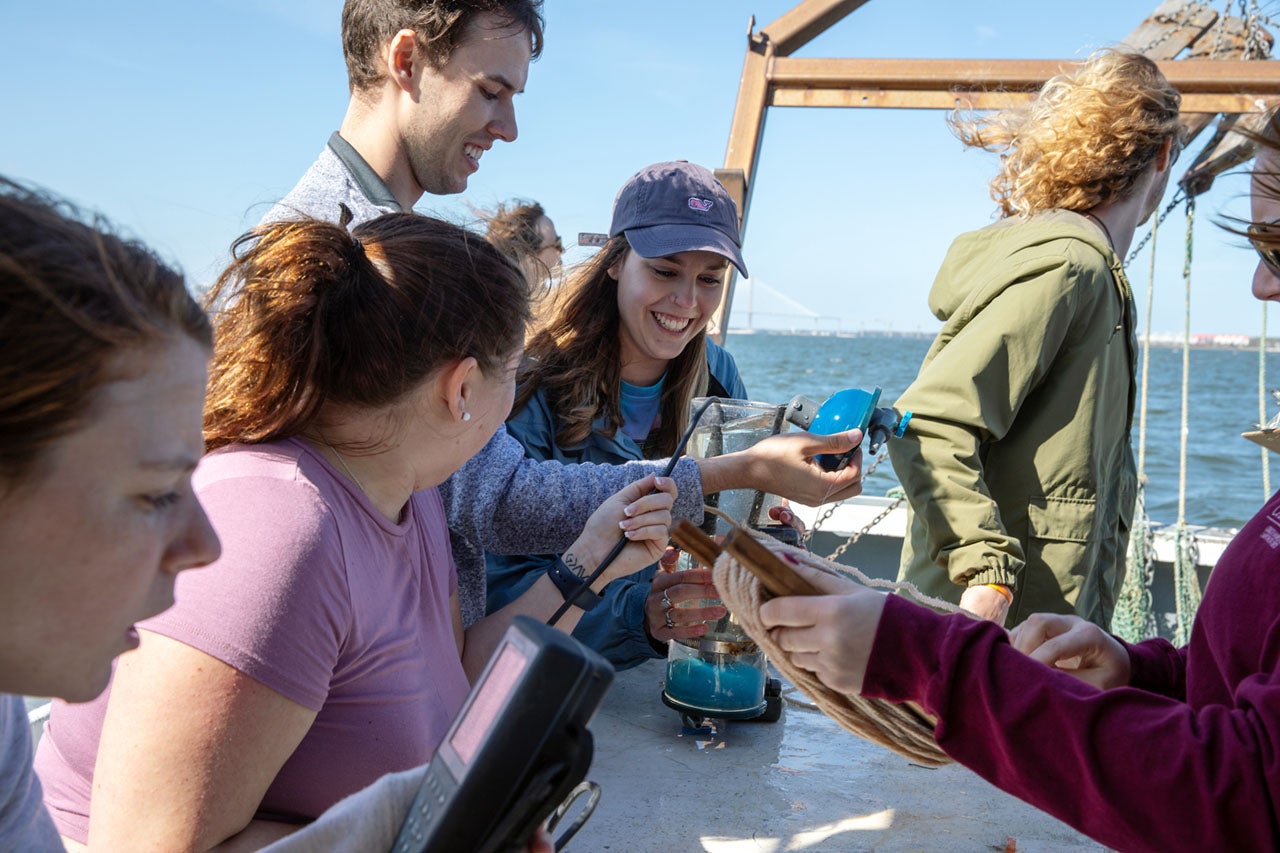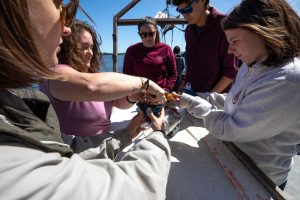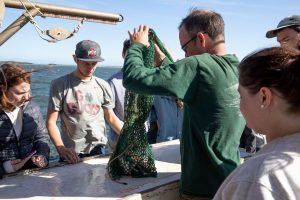The 52-foot RV Silver Crescent research vessel slowly cruises through the murky waters of the Charleston harbor on a bright, sunny March afternoon.

Marine biology professor Gorka Sancho demonstrates equipment for collecting water samples. (Photos by Heather Moran)
About a dozen oceanography students stand at the boat’s stern and stare at a spot several yards behind the boat as a trawl winch gradually reels in a long steel cable attached to the collection net known as the otter trawl. Once the net breaks the surface, they haul it into the boat and take it to a small wooden table where they gently open it; showcasing the array of fish, squid and other marine life that were swimming in the water just moments before.
This is just another day of studying at the College of Charleston’s Grice Marine Laboratory.
On this particular trip, the undergraduate students spent several hours on the research vessel collecting water samples, checking oxygen levels and measuring light penetration at six research stations in the Charleston Harbor estuary. The data collected will be used by the students for lab reports and educational exercises.
For 17 years, biology professor Gorka Sancho has been taking students out upon Lowcountry waters as part of the oceanography course he teaches. Sancho says this trip is important because many of his students have never been on the deck of a research vessel.
“It is a great hands-on experience for students to understand how to deal with oceanic equipment,” he says.
Sancho believes these on-board classes help students better understand the methods used in the deployment of the equipment and the responsibility needed for the gathering and recording of data.
- Oceanography Class
- Oceanography Class
Peter Meier, marine operations manager at Grice Marine Laboratory, says the College uses the South Carolina Department of Natural Resources (SCDNR) research vessel to give students a unique educational experience.
“It is cool for them to get their hands wet,” says Meier. “Instead of just staring at a data file on a computer, they are actually seeing where the data comes from.”
These trips are not the only advantage of having a marine laboratory on the water. Meier says students also benefit from the partnership between Grice Marine Lab, SCDNR and National Oceanic and Atmospheric Administration offices that are clustered together at the Fort Johnson Marine Resources Center on James Island.
The proximity to scientists and researchers, says Meier, is invaluable to students interested in gaining experience working in marine science laboratories.
“There are about 200 scientists working on this side of the gate (at Fort Johnson),” says Meier. “If you are interested in shrimp, dolphins or sea turtles, there is someone here who is an expert in it.”






